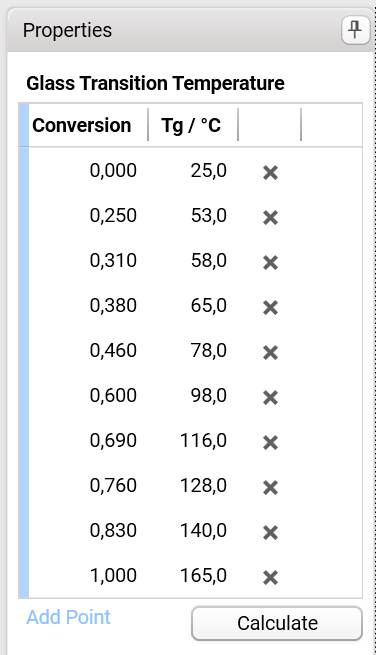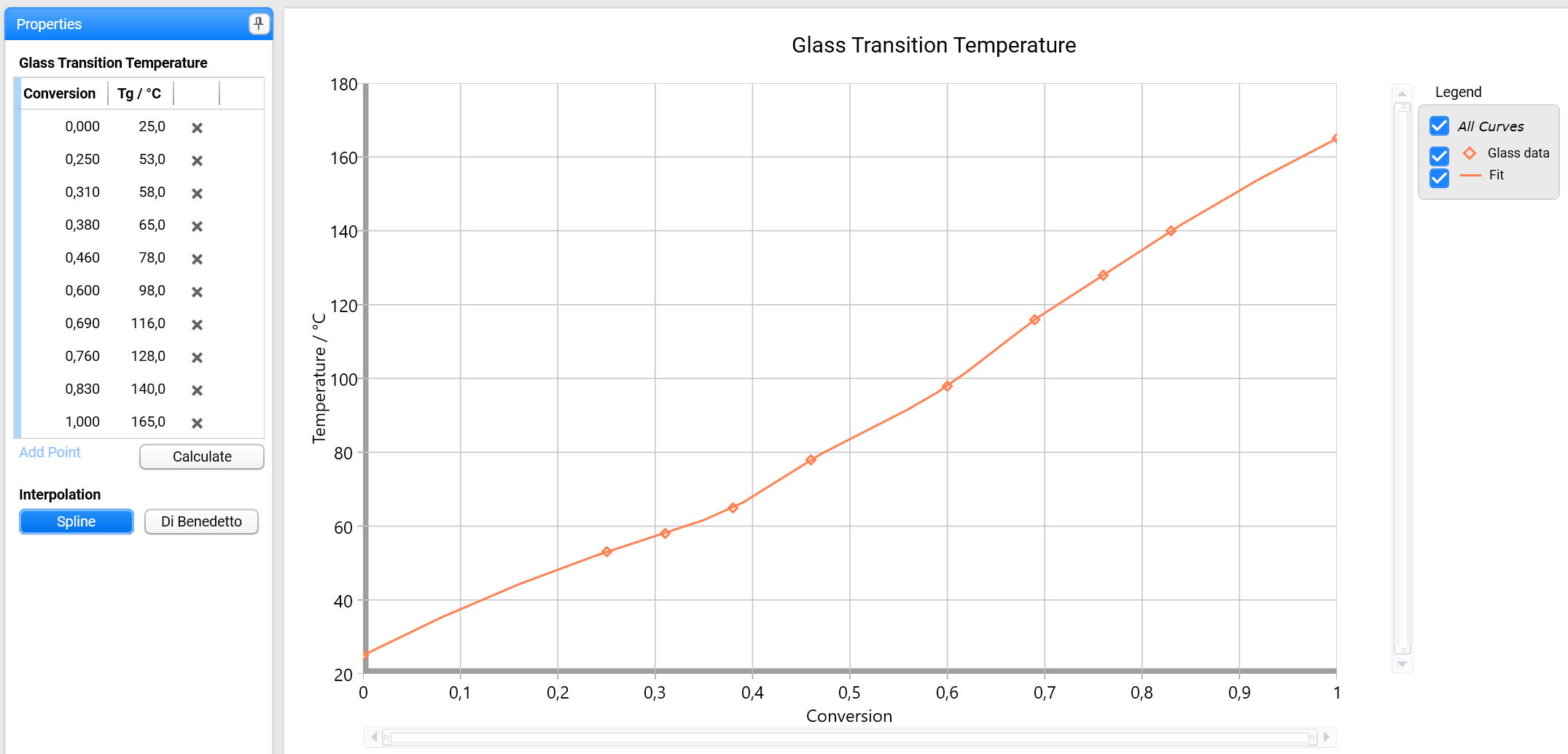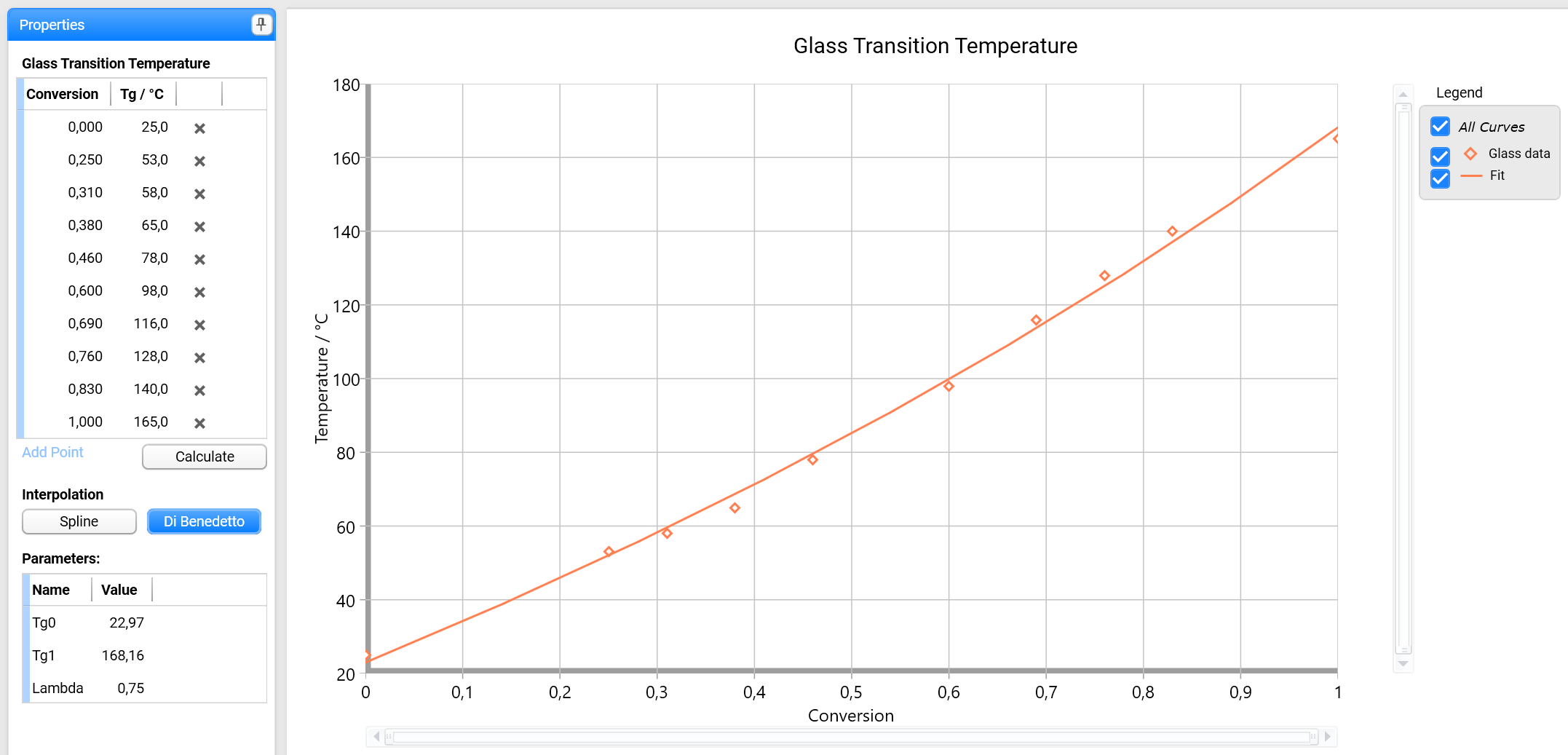Glass Transition Data (only for DSC Curing)
For projects of type DSC Curing, it is possible to define the glass transition temperatures Tg as a function of the conversion α (degree of curing). The mathematical interpolation of these data can be utilized to simulate glass transition temperatures as a function of time or temperature.
Click on Glass Transition Data:

In Properties, one can add Tg data points (conversion α and Tg for this conversion), edit them or delete Tg data points. At least one Tg data point is required. See remark below regarding how to determine Tg(α) from DSC measurements.

Press Calculate for a new calculation of the interpolation or an update.
For one Tgdata point, the interpolation is a constant over the entire conversion range. Two Tgdata points always lead to a line and three Tg data points to a parabola. If more than three Tg data points are given and interpolation type Spline is selected, a spline is calculated.
Example

Di Benedetto as interpolation type uses Di Benedetto’s equation for the fit of Tgas a function of the conversion α:

The parameters Tg0 and Tg1are the glass transition temperatures at α=0 and α=1. The parameter λ determines the curvature of the fit, which can have only one direction in case of Di Benedetto as interpolation type.
Example

Note: How to determine the glass transition temperature Tg as a function of the conversion α from DSC measurements:
Heating of the first, completely uncured sample to a sufficiently high temperature so that Tg(α=0)and also the entire curing effect are detected; the enthalpy of this exothermic curing effect is ∆Htot. Then, this fully cured sample is cooled down again and heated a second time revealing Tg(α=1).
Further Tg(α) data is determined in the following way: For each Tg(α) data point, a new completely uncured sample is heated only to temperatures where curing has started but is not yet complete. Then this sample is cooled down again, and heated up a second time to the temperature where curing is fully completed; the enthalpy of this exothermic curing effect in the second heating is ∆H. The glass transition temperature observed in the second heating is Tg(α) and the corresponding α is equal to (∆Htot-∆H) / ∆Htot. Adjustment of the maximum temperature of the first heating obviously allows for variation of α; the higher the maximum temperature, the higher is the value of α.